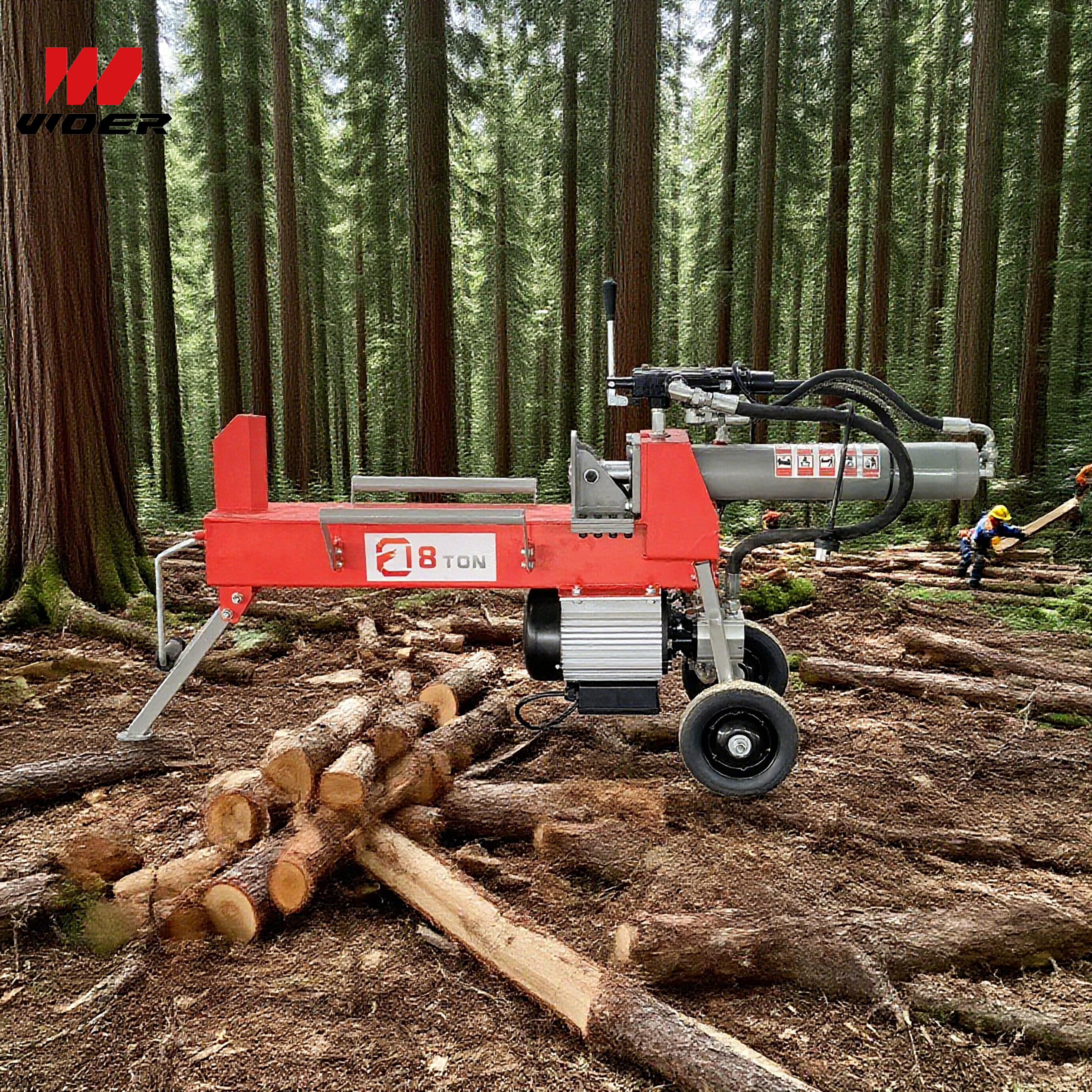Navigation
Contact us
Phone
Message

Splitting Capacity of Wood Splitters and Log Thickness
Q1: How does wood thickness affect the splitting capacity of a wood splitter?
A1: The thicker the log, the more splitting force (tonnage) is required. Small splitters can handle logs up to 10 inches, while heavy-duty hydraulic splitters are needed for logs over 15–20 inches.
Q2: What tonnage rating is suitable for different log diameters?
A2: Logs under 10 inches can be split with a 5–7 ton splitter. Logs between 10–15 inches usually require 10–15 tons. Logs above 15 inches may need 20–30 tons or more, depending on the wood type.
Q3: Does wood hardness also impact splitting performance?
A3: Yes. Hardwoods like oak, maple, or eucalyptus require higher tonnage than softwoods such as pine or spruce, even at the same thickness.
Q4: Can small wood splitters handle thick logs?
A4: Small splitters are best for thin, softwood logs. Attempting to split very thick or hardwood logs can overload the machine and shorten its lifespan.
Q5: How do professional wood splitters manage very thick logs?
A5: Commercial-grade hydraulic splitters with 25–35 tons of force can split logs over 20 inches thick, making them suitable for forestry and high-volume firewood production.
Q6: Why is it important to match splitter capacity with log thickness?
A6: Using a low-capacity splitter on thick logs can cause machine strain, safety risks, and inefficient splitting. The right match ensures efficiency, durability, and safe operation.
Q7: Can pre-cutting logs help smaller splitters?
A7: Yes. Cutting large logs into smaller sections before splitting allows small splitters to handle them more effectively, improving efficiency and reducing stress on the machine.
Q8: What’s the general guideline for choosing a splitter by log thickness?
A8: Always select a splitter with slightly higher tonnage than the minimum required for your typical log size. This ensures reliable performance and prevents machine overwork.

This stunning beach house property is a true oasis, nestled in a serene coastal community with direct access to the beach.
Contact
West Street, Melbourne Victoria 3000 Australia